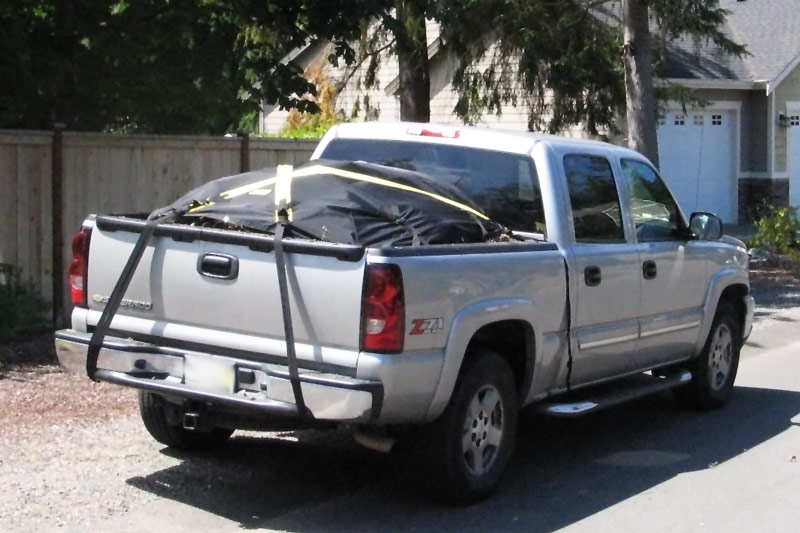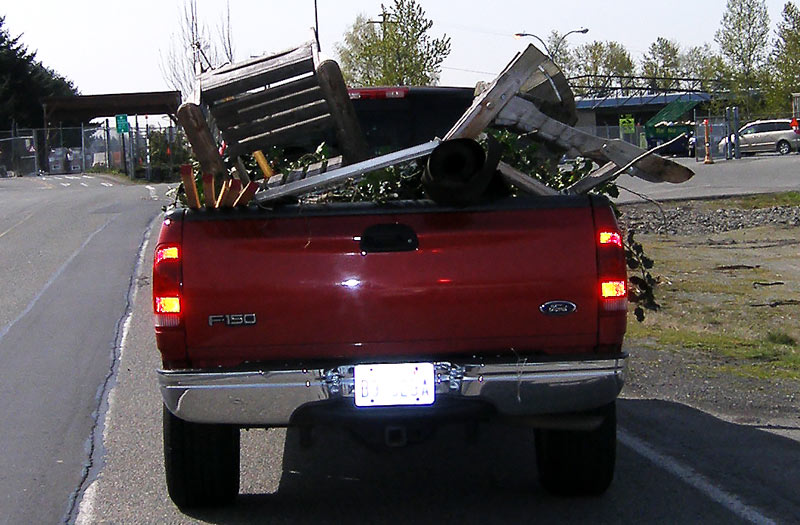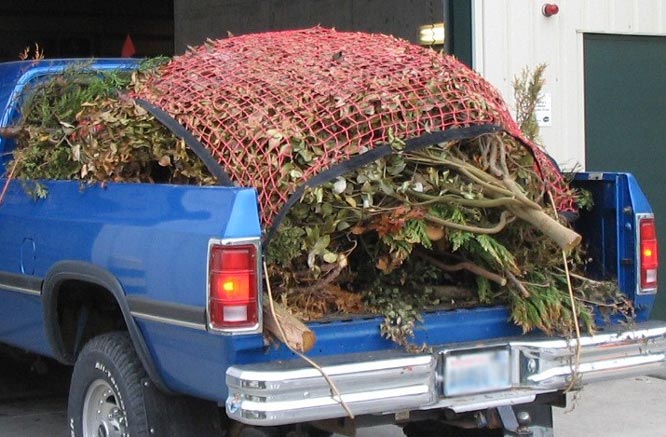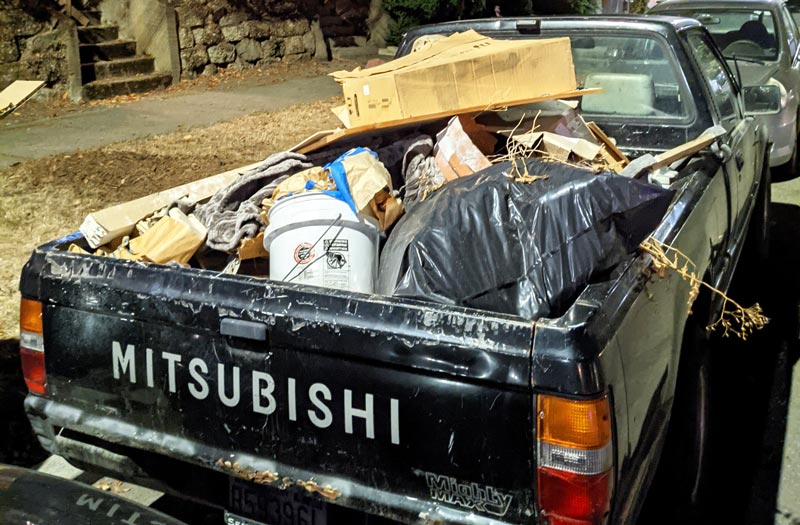Secure your load
Every year unsecured loads cause over 300 accidents in Washington and up to 40% of roadside litter. Even if you’re only going a short distance or going slow, it’s important to secure your load for safer roads.
What is an unsecured load?
A load is unsecure when any of the items or covering can become loose, detached, or leave the vehicle while it’s moving.
These images show examples of unsecured loads:
How to secure your load
Securing your load is quick, easy, and only takes a few minutes and basic supplies.
- Put lighter items at the bottom and place heavier items on top to hold them down.
- Use a tarp to cover your load to keep items from falling out or blowing away.
- Tie large items and any coverings directly to your vehicle using rope, netting, straps, or chains.
- Check that your load is fully strapped down and your vehicle is not overloaded.
A load is secure when nothing can slide, shift, fall or sift onto the roadway or become airborne.

Fines for unsecured loads
Driving with an unsecured load is against the law. Washington State law, RCW 46.61.655 requires every vehicle driven or moved on any public road to be secured.
We charge a $25 fee to any vehicle arriving at our transfer stations or the landfill with an unsecured load. This fee is part of King County Code 10.12.040.
Related links
Secure Your Load campaign
Information and toolkit by the Department of Ecology

 Translate
Translate


